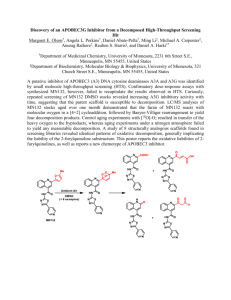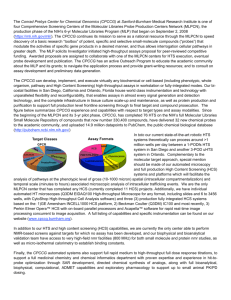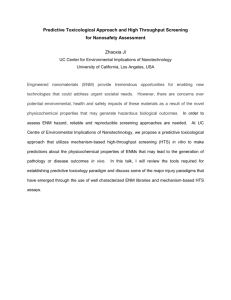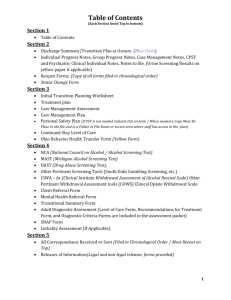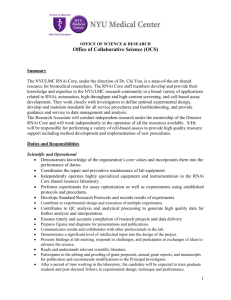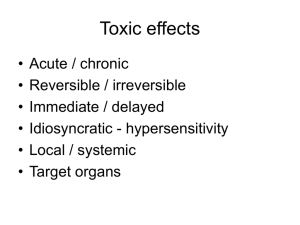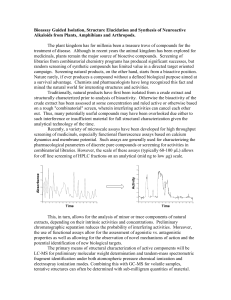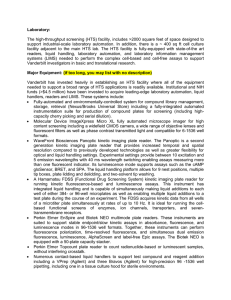GUIDE TO ABSTRACT PREPARATION
advertisement
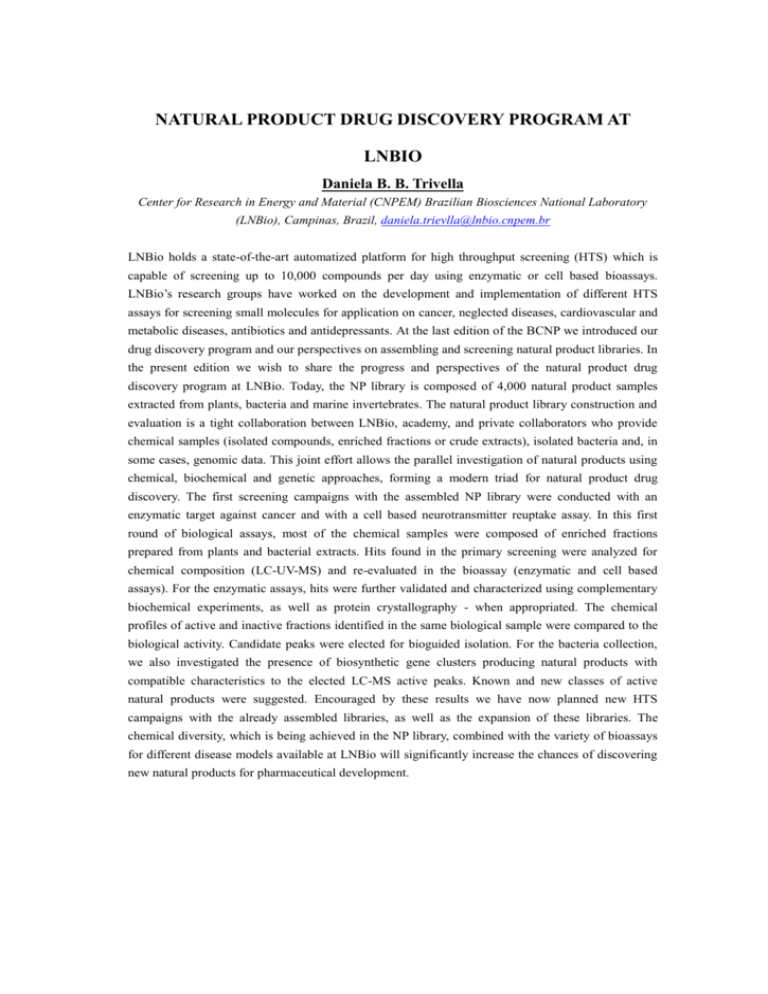
NATURAL PRODUCT DRUG DISCOVERY PROGRAM AT LNBIO Daniela B. B. Trivella Center for Research in Energy and Material (CNPEM) Brazilian Biosciences National Laboratory (LNBio), Campinas, Brazil, daniela.trievlla@lnbio.cnpem.br LNBio holds a state-of-the-art automatized platform for high throughput screening (HTS) which is capable of screening up to 10,000 compounds per day using enzymatic or cell based bioassays. LNBio’s research groups have worked on the development and implementation of different HTS assays for screening small molecules for application on cancer, neglected diseases, cardiovascular and metabolic diseases, antibiotics and antidepressants. At the last edition of the BCNP we introduced our drug discovery program and our perspectives on assembling and screening natural product libraries. In the present edition we wish to share the progress and perspectives of the natural product drug discovery program at LNBio. Today, the NP library is composed of 4,000 natural product samples extracted from plants, bacteria and marine invertebrates. The natural product library construction and evaluation is a tight collaboration between LNBio, academy, and private collaborators who provide chemical samples (isolated compounds, enriched fractions or crude extracts), isolated bacteria and, in some cases, genomic data. This joint effort allows the parallel investigation of natural products using chemical, biochemical and genetic approaches, forming a modern triad for natural product drug discovery. The first screening campaigns with the assembled NP library were conducted with an enzymatic target against cancer and with a cell based neurotransmitter reuptake assay. In this first round of biological assays, most of the chemical samples were composed of enriched fractions prepared from plants and bacterial extracts. Hits found in the primary screening were analyzed for chemical composition (LC-UV-MS) and re-evaluated in the bioassay (enzymatic and cell based assays). For the enzymatic assays, hits were further validated and characterized using complementary biochemical experiments, as well as protein crystallography - when appropriated. The chemical profiles of active and inactive fractions identified in the same biological sample were compared to the biological activity. Candidate peaks were elected for bioguided isolation. For the bacteria collection, we also investigated the presence of biosynthetic gene clusters producing natural products with compatible characteristics to the elected LC-MS active peaks. Known and new classes of active natural products were suggested. Encouraged by these results we have now planned new HTS campaigns with the already assembled libraries, as well as the expansion of these libraries. The chemical diversity, which is being achieved in the NP library, combined with the variety of bioassays for different disease models available at LNBio will significantly increase the chances of discovering new natural products for pharmaceutical development.


